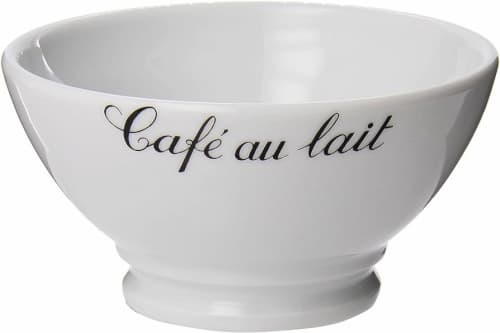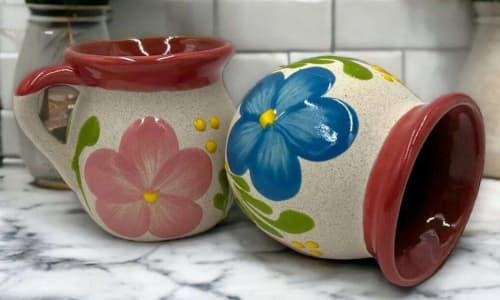
13 October, 2023
Around the World in 80 Mugs: A Journey Through Cultures
Mugs, cups, and drinking vessels have been an integral part of human history. Not just mere utensils, these vessels carry tales of cultures, customs, and communal bonds. As we embark on this captivating journey 'Around the World in 80 Mugs', we will traverse continents, peek into local traditions, and celebrate the diverse beauty of mugs that have graced human palms over centuries.
Masai Tribe's Wooden Drinking Vessels

In the sprawling savannahs of East Africa, the Masai people have a unique drinking tradition. These semi-nomadic warriors use wooden vessels, often intricately carved and decorated with beads. These vessels, known as 'Orkereiret', are not just tools for drinking. They are symbols of status. The detailed carvings often convey stories of valour, bravery, and tribe folklore. It's common for the Masai to drink a mixture of cow's blood and milk, especially during ceremonies. Sharing from the same vessel reinforces community bonds and represents unity.
Ornate Teacups of Asia

Asia, with its rich tapestry of history and traditions, brings an array of ornate teacups:
China: Often regarded as the birthplace of tea, China boasts delicate porcelain cups. These are often adorned with intricate paintings, depicting tales from Chinese folklore or serene landscapes. Traditional Chinese tea ceremonies, like Gongfu, prioritise the aesthetics of the cup as much as the quality of the tea.
Japan: The Japanese tea ceremony, or 'Chanoyu', is a spiritual process. Their tea bowls, or 'Chawan', are rustic and wabi-sabi in design, celebrating the beauty in imperfections.
India: Chai, the Indian tea, is traditionally served in clay cups called 'Kulhads'. These earthy, unglazed cups impart a unique flavour to the chai, and being eco-friendly, are discarded after a single use, returning to the earth they came from.
Clay Mugs of South America

The tapestry of South America is rich with traditions, each woven from threads of indigenous practices, colonial influences, and the unyielding landscapes that have shaped its people. One such tradition that stands out, especially in the regions of Peru and Colombia, is the use of 'Chamba' clay mugs.
'Chamba', commonly referred to in Colombia, is made from a unique type of black clay in the Andes. This clay is a testament to the region's rich geology resulting from centuries of volcanic activity and mineral deposits. The process of crafting Chamba ware is meticulous. Artisans mould the clay by hand or on a wheel, then allow it to dry naturally in the sun. It's then burnished, not with glaze, but with smooth stones or tools to give it a subtle sheen. Finally, the pieces are fired in kilns, transforming the clay into a characteristic deep black or brown finish.
They are revered for their functionality. Their porous nature not only allows them to retain heat but also gradually imparts a unique earthy flavour to the contents, enhancing the experience of the drink or food. Beyond their everyday use, Chamba mugs have ingrained themselves into the cultural fabric of the regions. They are not merely utensils but carriers of memories and shared experiences. During festivals, it's common to see people sipping hot beverages from these mugs, their hands warmed by the clay, as they celebrate and dance. In family reunions, Chamba serves as a bridge between generations, with elders passing down tales of yesteryears over cups of Aguapanela.
European Mugs

Europe, with its amalgamation of the old and new, presents a fascinating array of mugs:
Germany: The iconic 'Bierkrug' or beer stein is a hallmark of German drinking culture. Often made of stoneware and accompanied by a lid, it's a favourite during Oktoberfest.
France: The French coffee bowl, or 'Bol', is a breakfast staple. Larger than a typical coffee cup, it's perfect for dipping morning pastries like croissants.
Russia: The 'Podstakannik' is a tea glass holder, often made of metal, and used on trains or in homes, symbolising Russian hospitality.
Turkey
Turkey is renowned for its tea culture. The Turkish tea cup, 'Çay Bardagi', is an elegant, tulip-shaped glass without a handle. This design allows one to enjoy the deep crimson hue of the tea. Traditionally, Turks drink black tea without milk, often sweetened. It's a ritual, especially in the afternoon, and is often accompanied by conversations.
Morocco
Morocco's famed mint tea is served in beautifully designed tea glasses known as 'Beldi' glasses. They are often ornate, showcasing intricate patterns and sometimes adorned with gold or silver paint. Pouring the tea from a height, creating a frothy brew, and enjoying it in these glasses is integral to Moroccan hospitality.
Italy
Italy, home of the espresso, has its own distinct coffee culture. The espresso is often served in small ceramic cups, but when it comes to wine, especially in informal settings, it’s not uncommon to drink from a 'Bicchiere', a simple glass tumbler. This modest drinking vessel emphasises the casual and communal spirit of enjoying wine among friends and family.
Mexico

In Mexico, one might encounter 'Jarritos' – traditional clay mugs. They are stout, with a wide base and often hand-painted with bright patterns. These mugs keep beverages cool, making them perfect for sipping 'Agua Fresca' on a hot day. The porous nature of the clay also adds a unique taste to the drink, much cherished by locals.
Greece
Greek coffee, similar in preparation to Turkish coffee but uniquely flavoured, is traditionally made in a 'Briki' – a small, brass or copper pot. Once brewed, it's poured into small, white porcelain cups. The process of making and enjoying Greek coffee is slow, deliberate, and meant to be shared with companions.
South Korea
Tea culture in South Korea is deeply rooted in its history. Traditional Korean tea cups, known as 'Sabal', are often ceramic, without handles, and sometimes accompanied by wooden saucers. Tea ceremonies in Korea, 'Darye', emphasise harmony with nature. The minimalist design of the Sabal aligns with this philosophy, allowing drinkers to focus on the tea's colour, aroma, and taste without distraction.
The Rituals of Sharing
Across cultures, the act of drinking often transcends the individual. It becomes a communal activity, a ritual of bonding. From the Ethiopian coffee ceremonies where beans are roasted, ground, and brewed in a communal setting, to the British afternoon tea, these rituals are not just about the beverage. They're about community, sharing stories, and creating memories.
In conclusion, while our journey 'Around the World in 80 Mugs' is metaphorical, it underscores a profound truth. Drinking vessels, in their myriad forms, are not mere objects. They are carriers of culture, stories, and shared moments. In every sip, there lies a tale waiting to be told.
The Mugs Only Team


